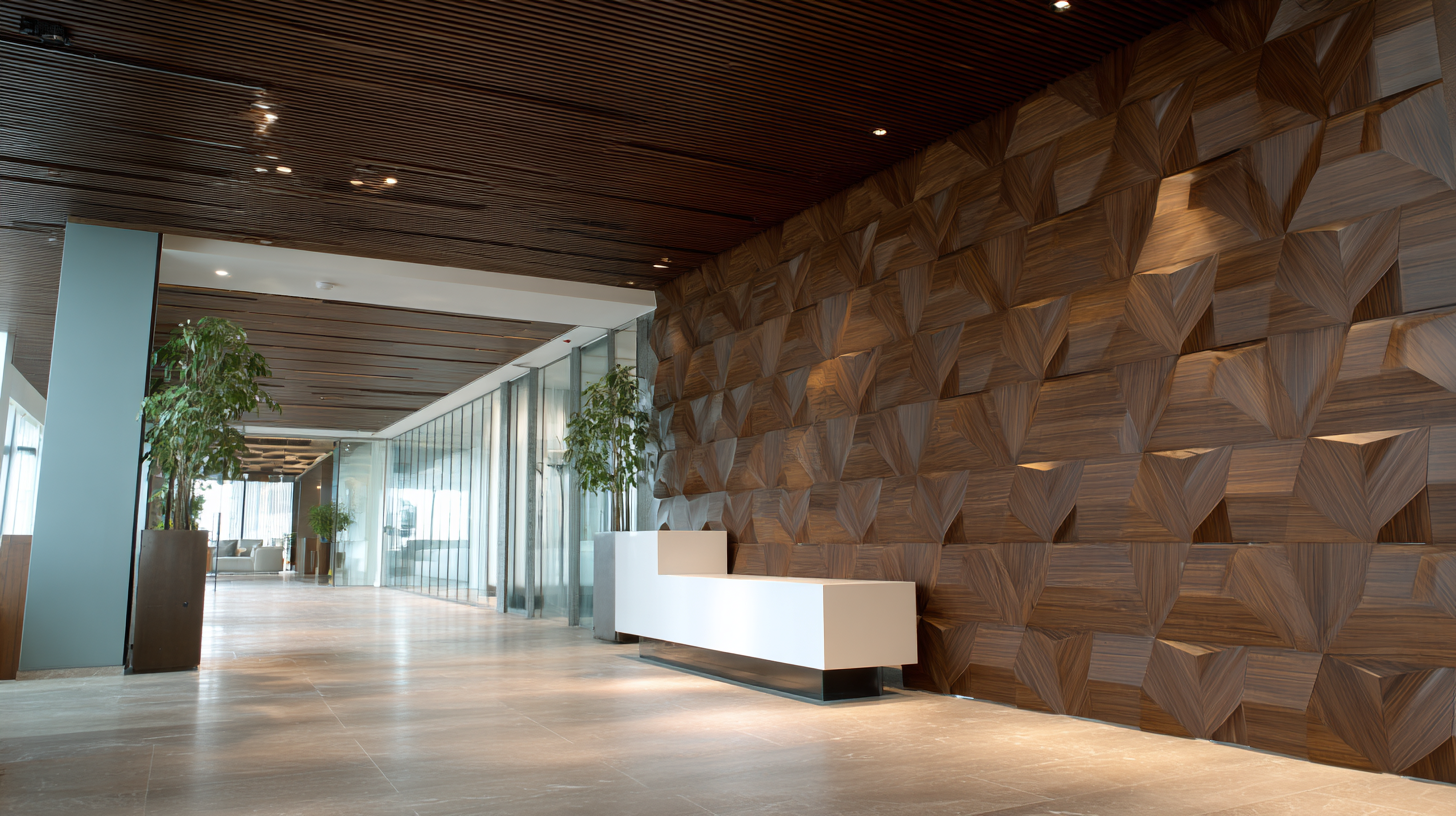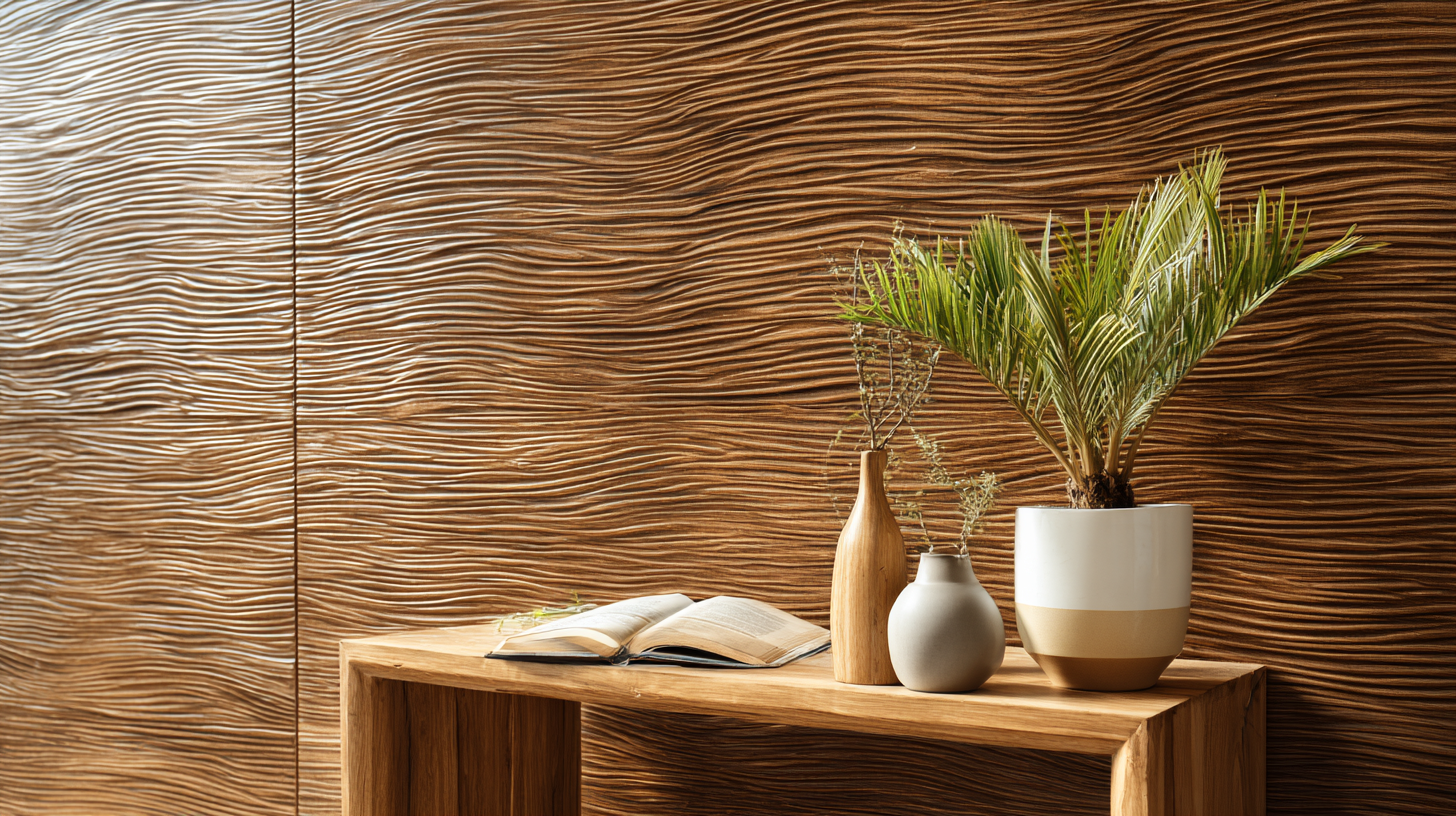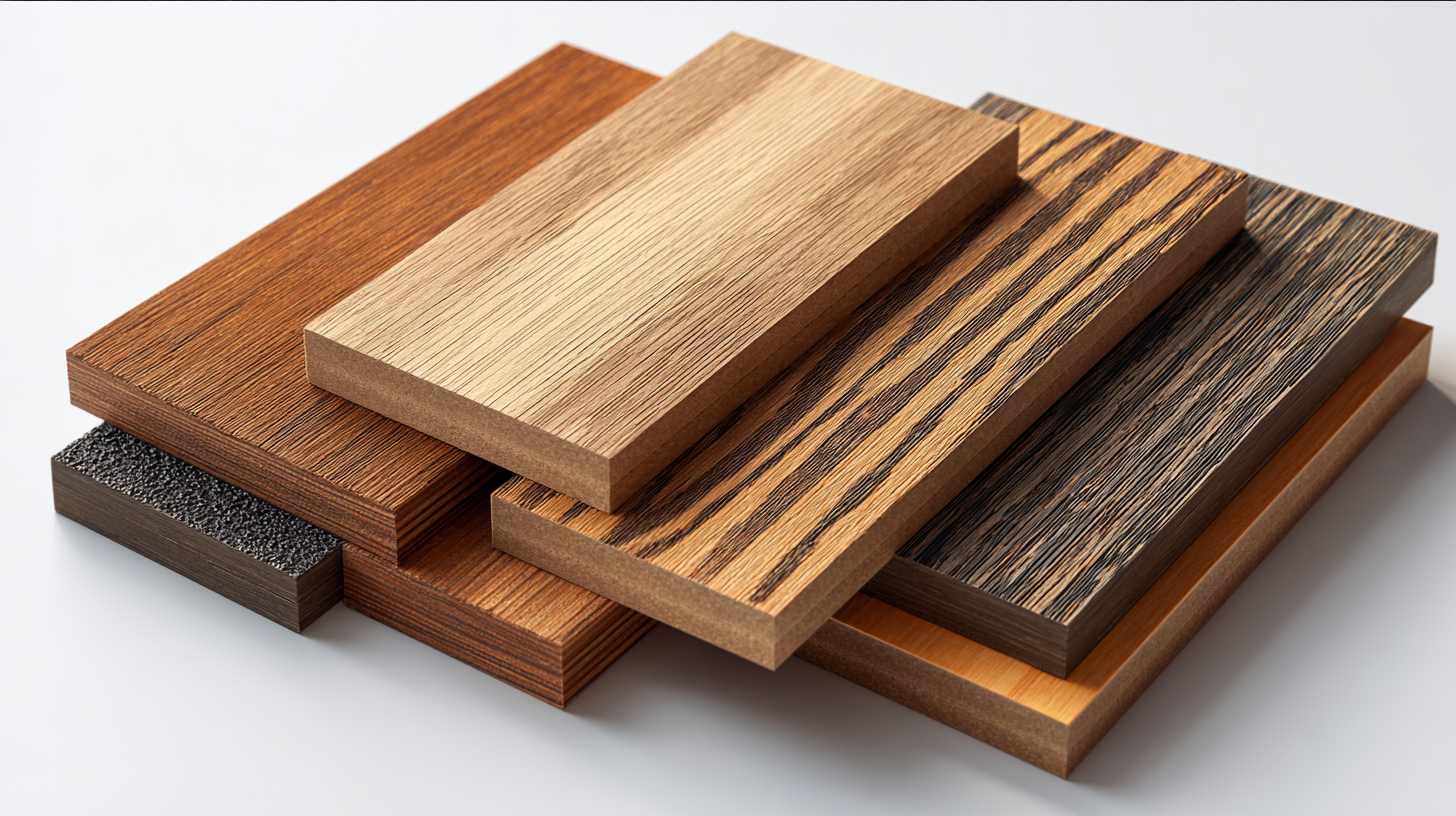Leave Your Message
The interior design landscape is undergoing a significant transformation, with WPC (Wood Plastic Composite) wood wall panels emerging as a leading trend in modern aesthetics. According to a recent report by MarketsandMarkets, the global market for wood-plastic composites is expected to reach $10.5 billion by 2026, growing at a CAGR of 11.6% from 2021. This rapid growth underscores the shifting preferences towards sustainable and versatile materials that WPC wall panels offer.

Manufactured with high-quality materials from top factories in China, these panels not only enhance the visual appeal of interiors but also provide durability and resistance to moisture, making them an ideal choice for various environments. As designers and homeowners alike embrace eco-friendly solutions, the WPC wood wall panel is poised to become a cornerstone of contemporary interior design, blending style with practicality.
WPC (Wood Plastic Composite) wood wall panels have emerged as a popular choice in modern interior design, offering a combination of aesthetics and practicality. According to a report by Research and Markets, the global demand for WPC materials is forecasted to reach $9 billion by 2025, indicating a steady growth driven by their versatile applications and favorable properties. These panels not only provide the warm, natural look of wood but also offer enhanced durability and resistance to moisture and insects, making them ideal for various environments, from residential homes to commercial spaces.
One of the standout benefits of WPC wood wall panels is their eco-friendliness. They are made from recycled materials, significantly reducing the carbon footprint compared to traditional wood products. A study by the American Forest & Paper Association reveals that using WPC panels can lead to a reduction of over 30% in greenhouse gas emissions in interior projects. Additionally, their low maintenance needs—requiring just occasional cleaning—coupled with their ease of installation, further solidify their position as a future-forward choice in interior design, aligning with the growing trend towards sustainable and hassle-free living spaces.
WPC (Wood Plastic Composite) wall panels are revolutionizing modern interior design with their unique blend of aesthetic appeal and functional benefits. One of the standout features of WPC panels is their exceptional durability. According to a report by MarketsandMarkets, the global WPC market is expected to reach $9.2 billion by 2024, driven largely by the material's resistance to rot, moisture, and insects, making it an ideal choice for long-lasting interior finishes. Unlike traditional wood, WPC panels do not warp or crack, ensuring that your walls maintain their beauty even in challenging environments.
Another remarkable aspect of WPC wood wall panels is their eco-friendliness. A study from the Forest Products Laboratory shows that WPC products can incorporate a substantial percentage of recycled materials, significantly reducing the environmental impact compared to conventional lumber. Additionally, the low maintenance requirements of WPC panels further enhance their appeal; they do not require staining or sealing, minimizing both time and costs for homeowners. This combination of sustainability and practicality makes WPC wall panels a standout choice for those looking to embrace the future of interior design.
| Feature | Description | Benefits | Sustainability |
|---|---|---|---|
| Durability | Resistant to moisture, warping, and insects. | Long-lasting with minimal maintenance. | Made from recycled wood and plastic, reducing waste. |
| Aesthetic Appeal | Available in various textures and finishes that mimic natural wood. | Enhances interior design with a warm, natural look. | Promotes the use of sustainable materials over traditional wood. |
| Ease of Installation | Lightweight and can be installed easily over existing walls. | Reduces labor costs and time during installation. | Most products are manufactured using eco-friendly processes. |
| Cost-Effectiveness | Generally more affordable than solid wood alternatives. | Provides a high-end look without the high-end price. | Utilizes recycled materials, decreasing environmental impact. |
 WPC (Wood Plastic Composite) wall panels are rapidly gaining traction in interior design due to their aesthetic appeal and durability. A recent industry report by Research and Markets indicates that the global WPC market is projected to grow at a compound annual growth rate (CAGR) of 11.3% from 2021 to 2026, reflecting a significant shift towards these eco-friendly materials. Among the top contenders in the market, brands like Wall Art and Wood Wall are noteworthy for their innovative designs and robust performance, combining natural wood aesthetics with the practicality of synthetic materials.
WPC (Wood Plastic Composite) wall panels are rapidly gaining traction in interior design due to their aesthetic appeal and durability. A recent industry report by Research and Markets indicates that the global WPC market is projected to grow at a compound annual growth rate (CAGR) of 11.3% from 2021 to 2026, reflecting a significant shift towards these eco-friendly materials. Among the top contenders in the market, brands like Wall Art and Wood Wall are noteworthy for their innovative designs and robust performance, combining natural wood aesthetics with the practicality of synthetic materials.
When comparing the best WPC wood wall panels, factors such as moisture resistance, ease of installation, and eco-friendliness are critical. For instance, a study by Allied Market Research reveals that WPC panels can withstand humidity up to 70%, making them ideal for varying environmental conditions. Additionally, leading products often feature interlocking systems for seamless installations, reducing labor costs and installation time. Overall, the integration of WPC wall panels in interior design not only enhances visual appeal but also provides long-lasting solutions that cater to modern sustainability goals.
WPC wood panels, composed of wood fibers and thermoplastics, are becoming increasingly significant in modern interior design due to their sustainable characteristics. As environmental concerns rise, designers and consumers alike are seeking alternatives that minimize ecological footprints. WPC panels not only offer the aesthetic appeal of traditional wood but also utilize recycled materials, making them a smart choice for eco-conscious projects.

The anticipated growth of the global WPC market emphasizes its relevance and potential in sustainable design. With market values expected to soar from 6,400.5 million in 2025 to 12,941.7 million by 2033, this indicates a compound annual growth rate of 9.2%. Such growth signals a shift towards materials that align with sustainability principles, allowing homeowners and businesses to incorporate stylish, durable, and environmentally friendly solutions into their spaces. Embracing WPC wood panels in interior design is not only a trend but also a crucial step towards a more sustainable future.
As we delve into the design trends influenced by WPC wood wall panels in 2023, it's clear that these innovative materials are shaping the future of interior aesthetics. WPC, or Wood Plastic Composite, combines the best of both worlds—offering the warmth of wood with enhanced durability and resistance to moisture. This hybrid nature makes WPC wall panels a popular choice among homeowners looking for stylish yet practical solutions. According to IMARC Group's report, the WPC market is poised for significant growth, driven by increasing urbanization and the demand for sustainable building materials.
In 2023, we're witnessing an explosion of creativity in wall panel designs, including a resurgence in natural textures and finishes that harmonize with modern decor. Home improvement trends highlight how versatile wall panels can elevate spaces—from cozy living rooms to chic office environments. With a forecast indicating steady growth in the flooring and carpets market from 2025 to 2035, driven by the rising demand for aesthetic interiors, it's evident that WPC wood wall panels are not just a trend; they’re an integral part of contemporary design solutions.
Brands are also capitalizing on this momentum, offering innovative DIY project solutions that appeal to creative homeowners eager to invest in stylish transformations.

